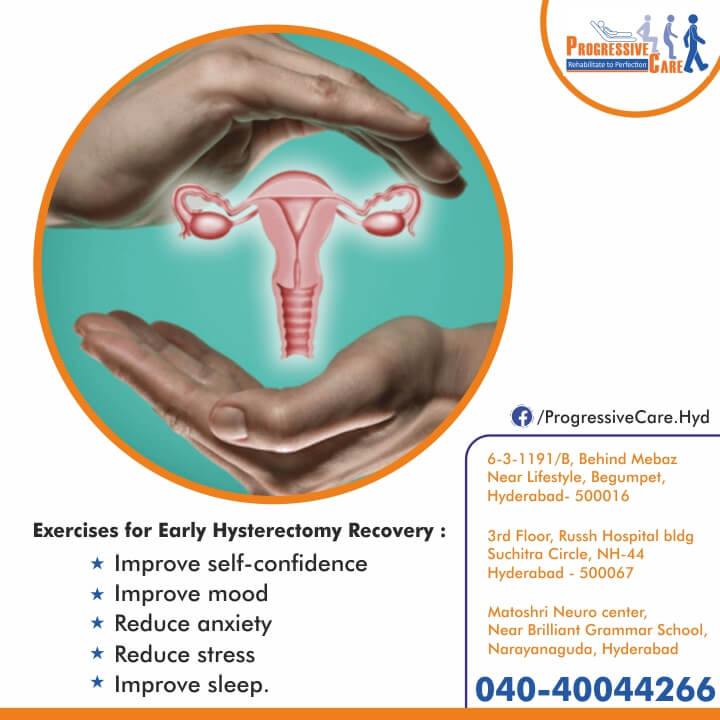Hysterectomy Rehabilitation

Hysterectomy is the surgery performed to remove the uterus which results in ending up menstruation and ability to become pregnant for a woman.
Causes for the surgery:
- Abnormal vaginal bleeding
- Prolapse of the uterus
- Uterine fibroids
- Cancer ( Cervix , Uterus or Ovaries )
- Endometriosis
Different types in hysterectomy:
- Total hysterectomy = removal of uterus and cervix
- Partial hysterectomy = removal of only uterus leaving cervix intact
- Hysterectomy and salpingo oophorectomy = removal of uterus, one or both ovaries and fallopian tubes.
- Radical hysterectomy = removal of womb, cervix, fallopian ovaries and part of vagina.
Approaches through which hysterectomy is done:
- Abdominal approach
- Vaginal approach
- Laparoscopic approach
Rehabilitation treatment slightly varies depending on the approach.
Signs and symptoms:
- Pain at the surgical site
- Scar
- Swelling ,redness around the site of incision
Preoperative and postoperative rehabilitation:
Preoperative exercises – Includes exercises which are done in the early postoperative period, so that the patient can cope-up with the exercises postoperatively.
- Breathing exercises
- Cough reflex includes huffing and coughing
- Aerobic exercises
- Upper limb and lower limb strengthening exercises
- Postural correction
Benefits of preoperative rehabilitation program:
- Systemic review concludes that preoperative exercises reduces the length of stay in the hospital
- Reduces the postoperative complications
- Helps in educating and training patient about the postoperative exercises
Postoperative rehabilitation aim:
- To avoid postoperative respiratory and circulatory complications
- To prevent muscles from wasting
- To prevent wound infection
- Scar management
- To prevent pressure sore
- Returning to daily living functional activities with minimal or no pain
Postoperative rehabilitation management:
- Deep breathing exercises
- Circulatory exercises initially when bed ridden
- Bracing exercises
- Mobility exercises like walking
- Pain management which includes electrotherapy modalities
- Scar mobilization
- Positioning – educating about comfort positions
- Pelvic floor strengthening exercises
- Lower abdominal muscle (transverse abdominis) activation exercises
- Upper and lower limb strengthening exercises
Recovery usually takes around 6 weeks to return to normal functional activities.
Benefits:
- Results in early recovery
- Reduces the length of hospital stay
Don’ts during first 6 weeks:
- Do not do heavy lifting and heavy activities like cooking large meals
- Avoid sudden movements
- Avoid sexual intercourse
- Avoid bending forward
- Avoid smoking
- Avoid sexual intercourse
Check out these links for
relevant information: Women’s health, Ante-natal post-natal
For further details contact us on : 040-40044266/9618906780
